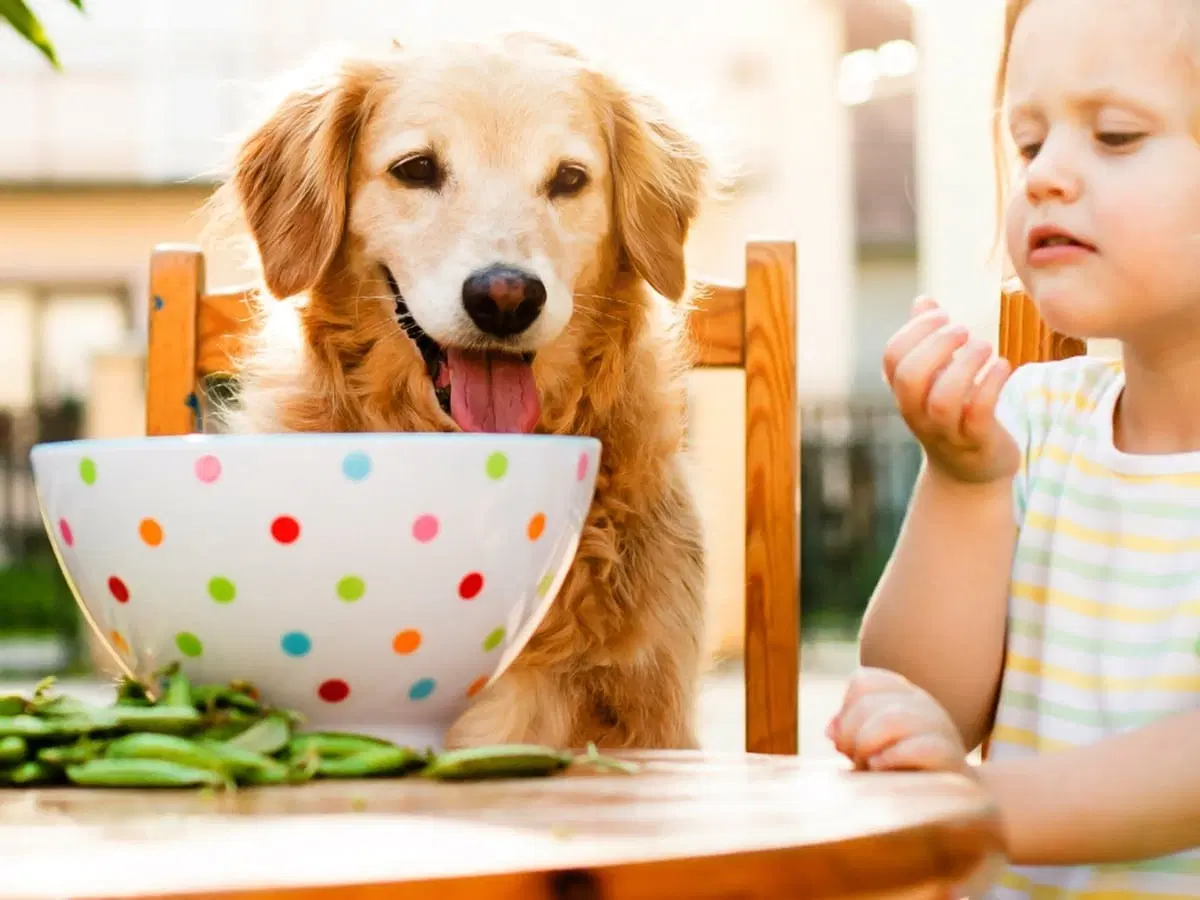Peas are everywhere! You see them on dinner plates, growing in gardens, and even in your dog's food bowl. But are peas safe and healthy for dogs to eat? Let's dig into the facts about peas and pups, covering the good, the bad, and how to prepare them for your furry friend.
Can Dogs Eat Peas?
Yes, dogs can eat peas in moderation. Not only are they safe, but they can also be a healthy and nutritious treat. Peas offer several benefits for dogs, including:
Vitamins and Minerals: Peas are a good source of vitamins A, K, and C, as well as minerals like iron, manganese, and phosphorus. These nutrients are essential for supporting your dog's overall health and well-being.
Fiber: Peas are rich in fiber, which helps to regulate digestion and prevent constipation. This is especially important for older dogs who may be prone to digestive issues.
Protein: Peas contain a moderate amount of protein, which is essential for building and repairing tissues.
Should I Give My Dog Peas?
Incorporating peas into a dog's diet can have numerous benefits, both in terms of overall health and specific wellness concerns. Peas can serve as a low-calorie, low-fat alternative to traditional treats, catering to weight management goals. Their high fiber content promotes satiety, reducing the likelihood of overeating and contributing to a healthy weight. Moreover, peas can provide a boost of energy for active dogs, acting as a natural energy source.
What to Know Before Feeding a Dog Peas?
According to DVM Antje Beth-Joslin, peas can be added to your pet's diet safely, but it's important to consider how they're packaged and prepared. These factors can have a large impact on how healthy the peas will be for your pet.
You should also keep in mind that moderation is key. Eating too many peas can lead to gastrointestinal upset, such as gas or diarrhea. Introduce peas gradually, starting with small amounts and monitoring your dog's response. Additionally, canned peas should be avoided due to their high sodium content, which can be detrimental to canine health.
How to Safely Prepare Peas for Your Dog?
Peas can be incorporated into a dog's diet in various ways. Fresh or frozen peas can be steamed, boiled, or roasted until tender. These methods preserve the nutritional integrity of the peas while making them easily digestible for dogs.
Alternatively, peas can be mashed and added to a dog's regular kibble or wet food. This method ensures that the dog receives the nutritional benefits of peas without having to pick them out individually.
Are There Any Dogs That Should Not Have Peas?
In rare instances, peas may pose certain risks to dogs. Dogs with pre-existing digestive issues may experience gastrointestinal discomfort upon consuming peas. Additionally, pea pods can pose a choking hazard, particularly for small dogs. Therefore, it is crucial to remove pea pods before offering peas to a dog.
Expert Insights From Spot
While it can be fun to share our favorite foods with our pets, pet parents should keep in mind that sometimes, eating human food can upset a pet's stomach. Pet parents should keep an eye on what their pets eat, and do their research before sharing their favorite snacks with their dogs. Being mindful of what treats we share with our pets can help keep them healthy while helping pet parents avoid unnecessary vet bills.
Can Dogs Have These Other Vegetables?
We decided to investigate to see if dogs can have other vegetables in their diets. These are our findings. Asparagus is not recommended. Onions, garlic, and spicy peppers are to be avoided at all costs.
Key Takeaways
Peas can be a healthy and nutritious addition to a dog's diet, providing a wealth of vitamins, minerals, and fiber. When introduced gradually and in moderation, peas can offer numerous benefits, including weight management, improved digestion, and increased energy levels. However, it is essential to exercise caution and avoid canned peas due to their high sodium content. With proper preparation and consideration, peas can be a delectable and nutritious treat for dogs.

Creative manager by day, pet enthusiast all the time! After 19 years with my dog (hopefully he wins the award for oldest pet in the world), I enjoy spending my days brainstorming tail-wagging content, and sniffing out the latest trends in the pet world.
*Jan 2019 to Aug 2024 Spot Pet Insurance Services, LLC claims data.
Meyers, Harriet. "Can Dogs Eat Peas?" American Kennel Club, 29 May 2024, https://www.akc.org/expert-advice/nutrition/can-dogs-eat-peas/.
Amidor, Toby. "Can Dogs Eat Peas?" DailyPaws, 23 Jun. 2022, https://www.dailypaws.com/dogs-puppies/dog-nutrition/what-can-dogs-eat/can-dogs-eat-peas.
Saylor, April. "Can Dogs Eat Peas?" PetMD, 09 May 2023, https://www.petmd.com/dog/nutrition/can-dogs-eat-peas.
The information presented in this article is for educational and informational purposes only and does not constitute or substitute for the advice of your veterinarian.












